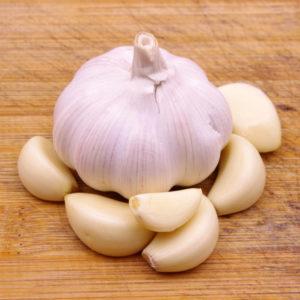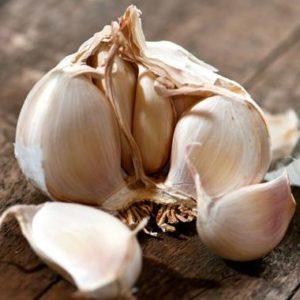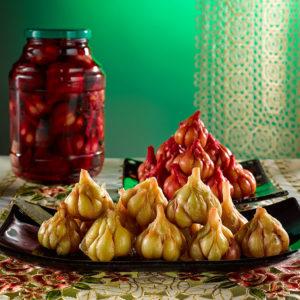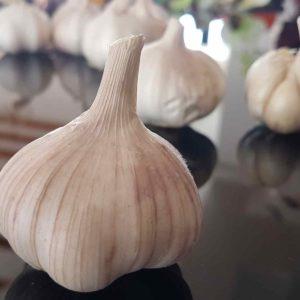How to recognize spring and winter garlic: differences in varieties in appearance, taste and other characteristics
Garlic is an ambiguous vegetable. Some do not like it because of its spicy and pungent taste, others cannot imagine dishes without the addition of this product. In any case, garlic takes pride of place in the beds and fields. It is grown by both amateur gardeners and large farms.
In nature, this culture is usually divided into two large groups - spring garlic and winter garlic. Let's analyze the differences between spring and winter garlic.
The content of the article
Which garlic is better: winter or spring
There is no unequivocal answer to this question: everyone chooses a kind of culture himself, depending on personal preferences.
There are several principles that will help you make your choice:
- If you have a small plot, then it is better to choose winter varieties, as they give a better yield and do not ripen so long. Large farms prefer spring varieties.
- Winter crops have a strong root system, which develops even during planting - in the fall. When it gets warm, the garlic starts growing immediately. The first harvest is harvested in late July - early August.
- If the summer is cool, then the chances are high that spring garlic will give bad fruits. Whereas winter crops have excellent weather resistance. For example, severe frosts or prolonged drought.
- If safety is a priority, choose spring varieties.
How do they differ from each other
We will analyze the criteria by which winter crops are distinguished from spring crops, and also look at photos of various varieties.
In appearance
 How to distinguish varieties by their appearance? First of all, it is worth noting the shape of the head and the number of teeth. As a rule, winter crops have 6 or 8. They are large and almost identical in size.
How to distinguish varieties by their appearance? First of all, it is worth noting the shape of the head and the number of teeth. As a rule, winter crops have 6 or 8. They are large and almost identical in size.
In spring, the number of cloves reaches 20 pieces, they are all different in size. Arranged in a spiral - the closer to the middle, the smaller.
Winter garlic has arrows with bulbs. Because of them, the head becomes smaller in size, since the arrows take up a large proportion of nutrients, so they must be removed. In spring varieties, arrows are absent. The husks of winter crops are harder and denser, while those of spring crops are softer.
Taste
Most gardeners note that the taste of spring varieties is softer and more piquant. While many winter varieties are sharp and hot.
By composition and properties
 There are many vitamins and useful elements in the arrows (leaves) of winter varieties: ascorbic acid, vitamins B1, B3, provitamin A. The heads of garlic contain polysaccharides, vegetable protein, fats (essential oils).
There are many vitamins and useful elements in the arrows (leaves) of winter varieties: ascorbic acid, vitamins B1, B3, provitamin A. The heads of garlic contain polysaccharides, vegetable protein, fats (essential oils).
After ripening, a lot of fructose and glucose are formed in the cloves. They are well absorbed by the body and have great value for human health. In addition, winter varieties boast a high content of fiber, starch, and organic matter.
Vitamins are represented by carotene and nicotinic acid. Separately, it should be said about thiamine - it is found only in garlic. All of the listed microelements are useful for the human body: they participate in redox processes, have an excellent anti-inflammatory effect, and act as natural bactericides. In addition, winter crops contain phosphorus, potassium, copper, sulfur, selenium, zirconium, sodium, and calcium.
As for spring varieties, they are not inferior to winter ones in terms of the amount of nutrients. Iodine is of particular importance: 1 kg contains 0.94 mg. Garlic also contains amino acids, including lysine. Essential oils are characterized by high antibacterial properties.
Important! The chemical composition of both spring and winter garlic depends on the variety, soil, climatic conditions of the region, storage conditions, and the composition of the fertilizers applied.
By ripening period
Spring crops ripen in the second half of summer, so the harvest is harvested in August. Winter crops ripen much earlier - at the beginning of summer. Determining whether the bulbs are ripe or not is very simple: the leaves of the plant should turn yellow and dry.
By landing time
This is the main difference between the two cultures. Winter crops are planted about a month before the onset of the first frost. As a rule, this is the end of September - early October.
Winter crops have excellent frost resistance and tolerate harsh climatic conditions.Spring, on the other hand, does not tolerate weather changes, so they plant it in early April - it is necessary that the earth warms up at least a little.
By keeping quality
Spring garlic kept better than winter. It does not lose its taste and presentation up to 1 year. Some varieties can be stored at low temperatures for up to 2 years.
The main thing is to store the vegetable in a dry, dark and cool place. Most winter varieties are stored for a maximum of about six months.
For care
Yarovaya needs more careful care, it needs fertile soil. Also, the variety "loves" feeding, which provide the plant with the necessary minerals.
Winter crops are more unpretentious, it is necessary to fertilize them 2 times less. Both varieties need regular watering and weed control.
Other differences
 A few words about the culinary purpose of the varieties.
A few words about the culinary purpose of the varieties.
If you wish to use a vegetable for canning and picklesthen better plant spring garlic. It is more compact, it is more convenient to use it for workpieces.
If you are using the plant to make sauces and seasonings, then winter garlic is more suitable. It has a spicier and brighter taste. It makes excellent adjika and ketchup.
Which garlic is best stored
Winter garlic retains its usefulness only for 5-7 months. Some varieties barely "survive" until the end of winter - they lose their taste, aroma, appearance.
Spring is stored much better and does not lose its advantages until spring. Cold rooms are well suited for storing winter crops - a balcony, basement, garage. Spring trees are also perfectly stored in urban apartments.
What kind do gardeners prefer
Gardeners of the southern regions of our country love spring varieties. The warm climate and fertile soil provide garlic with everything it needs to produce a rich harvest.
If you live in central Russia, we recommend winter varieties. They better endure bad weather, are resistant to frost.
If you will be using the vegetable as a seasoning for meals, choose spring varieties. If you want to get as many fruits as possible - winter crops. The choice of a variety depends on your goals and desires.
We will tell you about the top 36 best varieties of garlic and help with the choice in this article.
The best spring varieties

The top 3 best spring crops looks like this:
- Yelenovsky. Rounded white bulbs were liked by many gardeners. The weight of one head ranges from 30 to 40 g. The teeth are pale pink, there are about 25 of them in one bulb. Elenovsky is stored for a long time - about 2 years. The variety has a high yield and resistance to fungal diseases. Care does not require special knowledge, the main thing is to water and remove weeds on time.
- Aleisky. Late-ripening variety, it is stored for about 9 months on average. The best precursors for planting are cabbage, cucumbers, potatoes. Disadvantages: easily exposed to onion flies, which is why it is necessary to apply top dressing and fertilizers on time. It is widely used in food preparation and canning.
- Flavor. This variety came to us from France and has won the attention of many gardeners. Resistant to fungi and parasites. The heads are medium, the flesh is firm, medium-sharp. It is characterized as a fertile variety, perfect for growing in the middle zone of the country.
The best winter varieties

Top 3 best winter crops:
- Alekseevsky. One of the most popular winter varieties, also called the Alekseevsky giant. The weight of one head reaches 200 g, the husk is white. The head contains 4-6 large, even teeth. The smell is pungent, the taste is spicy-sweet, piquant. Resistant to diseases.
- Lyubasha. Weight - about 150 g, the husk is white and pink. Differs in high yield, perfectly tolerates both high humidity and prolonged drought. Widely distributed in central Russia. Does not need special care.
- Titanium. The variety ripens within about 110 days after the first shoots appear. Plant height about 35 cm, heads are large, weigh about 150 g, each with 4-6 cloves. The head is round with violet-white scales. Titanium is perfectly stored for six months and does not lose its useful properties.
Conclusion
Garlic is used in cooking, as a medicine, and even in cosmetology. Both spring and winter varieties are rich in a huge amount of vitamins and trace elements - thiamine, fiber, essential oils, keratin, vegetable protein.
Before choosing a variety, carefully study its characteristics and properties. Varieties differ in terms of planting, and in appearance and taste. For some regions, spring varieties are better suited, for others - winter ones.